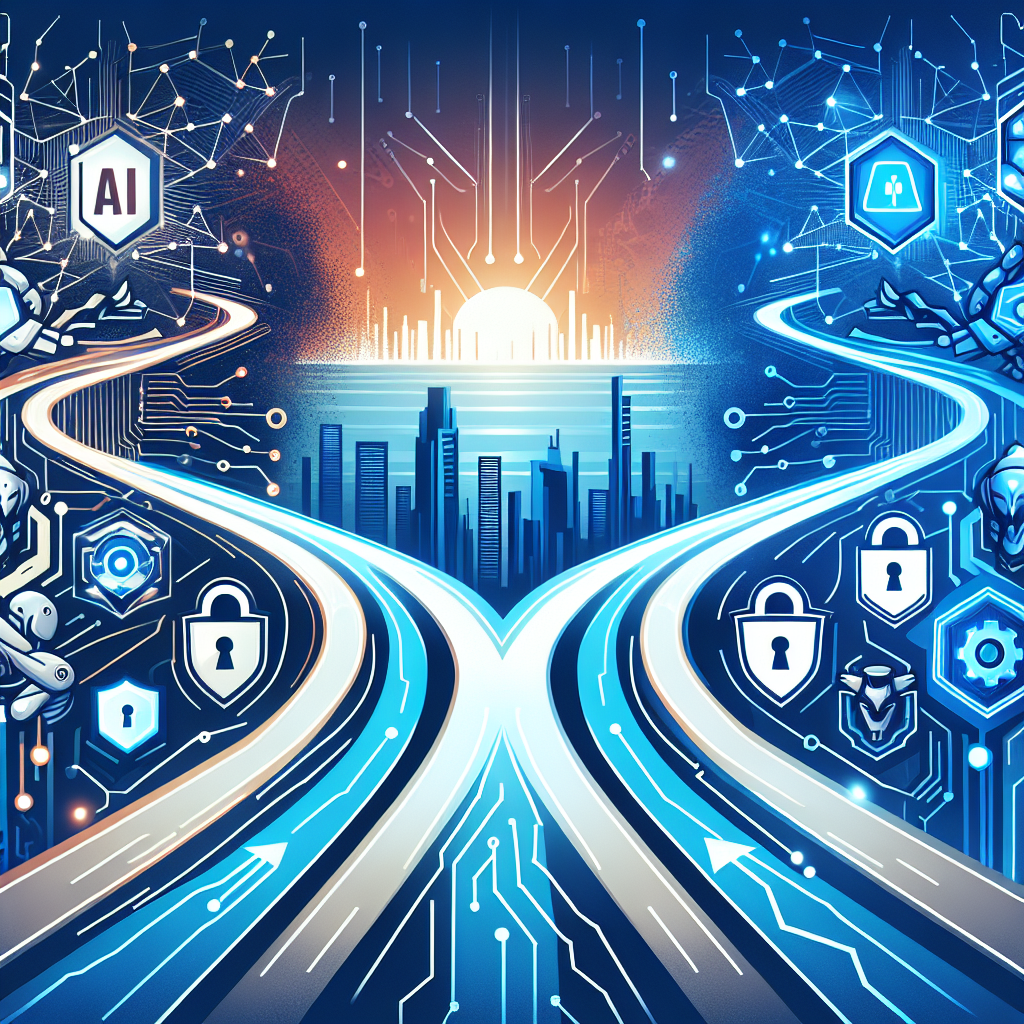The intersection of artificial intelligence (AI) and cybersecurity is a rapidly evolving field that is reshaping the way organizations defend against cyber threats. AI technologies are being increasingly integrated into cybersecurity solutions to enhance detection, response, and mitigation capabilities. This article explores the new frontiers of AI in cybersecurity and the benefits and challenges associated with this intersection.
AI in Cybersecurity: The New Frontier
AI has the potential to revolutionize cybersecurity by enabling organizations to detect and respond to threats more effectively and efficiently. AI technologies, such as machine learning and deep learning, can analyze vast amounts of data in real-time to identify patterns and anomalies that may indicate a potential security breach. This proactive approach to cybersecurity can help organizations stay ahead of cyber threats and prevent data breaches.
One of the key benefits of AI in cybersecurity is its ability to automate routine tasks, such as monitoring network traffic and identifying suspicious activity. This frees up cybersecurity professionals to focus on more strategic tasks, such as developing and implementing security policies and procedures. AI-powered cybersecurity solutions can also help organizations respond to threats more quickly by automatically isolating infected devices or blocking malicious traffic.
Another area where AI is making a significant impact in cybersecurity is threat intelligence. AI technologies can analyze vast amounts of threat data from a variety of sources, such as threat feeds, security logs, and incident reports, to identify emerging threats and vulnerabilities. This real-time threat intelligence can help organizations prioritize their response efforts and take proactive measures to protect their networks and data.
AI technologies are also being used to enhance endpoint security, such as antivirus and malware detection. Traditional antivirus solutions rely on signatures to identify known threats, which can be easily bypassed by sophisticated malware. AI-powered endpoint security solutions, on the other hand, can detect and block unknown threats based on their behavior, reducing the risk of zero-day attacks.
Challenges of AI in Cybersecurity
While AI has the potential to revolutionize cybersecurity, there are also challenges associated with its implementation. One of the main challenges is the lack of transparency and explainability of AI algorithms. AI technologies, such as deep learning, are often described as “black boxes” because it is difficult to understand how they arrive at their conclusions. This lack of transparency can make it difficult for cybersecurity professionals to trust AI-powered solutions and validate their findings.
Another challenge is the potential for AI technologies to be exploited by cybercriminals. AI-powered cyber attacks, such as phishing scams and ransomware, are becoming increasingly sophisticated and difficult to detect. Cybercriminals can use AI to automate their attacks, identify vulnerabilities, and evade detection by traditional security measures. This arms race between AI-powered cybersecurity solutions and AI-powered cyber attacks is likely to escalate in the coming years.
Privacy and ethical concerns are also important considerations when implementing AI in cybersecurity. AI technologies rely on vast amounts of data to train their algorithms, which can raise privacy concerns if sensitive information is involved. Organizations must ensure that they have appropriate data protection measures in place to safeguard their customers’ data and comply with data privacy regulations, such as the General Data Protection Regulation (GDPR).
FAQs
Q: How is AI being used in cybersecurity?
A: AI technologies, such as machine learning and deep learning, are being used in cybersecurity to analyze vast amounts of data in real-time, detect patterns and anomalies that may indicate a potential security breach, automate routine tasks, such as monitoring network traffic and identifying suspicious activity, and enhance threat intelligence and endpoint security.
Q: What are the benefits of AI in cybersecurity?
A: The benefits of AI in cybersecurity include the ability to detect and respond to threats more effectively and efficiently, automate routine tasks to free up cybersecurity professionals for more strategic tasks, enhance threat intelligence to identify emerging threats and vulnerabilities, and improve endpoint security by detecting and blocking unknown threats based on their behavior.
Q: What are the challenges of AI in cybersecurity?
A: The challenges of AI in cybersecurity include the lack of transparency and explainability of AI algorithms, the potential for AI technologies to be exploited by cybercriminals, and privacy and ethical concerns related to the use of vast amounts of data to train AI algorithms.
In conclusion, the intersection of AI and cybersecurity is reshaping the way organizations defend against cyber threats. AI technologies have the potential to revolutionize cybersecurity by enabling organizations to detect and respond to threats more effectively and efficiently, automate routine tasks, enhance threat intelligence, and improve endpoint security. However, there are also challenges associated with the implementation of AI in cybersecurity, such as the lack of transparency and explainability of AI algorithms, the potential for AI technologies to be exploited by cybercriminals, and privacy and ethical concerns. Organizations must carefully consider these challenges and implement appropriate measures to leverage the benefits of AI in cybersecurity while mitigating the associated risks.

